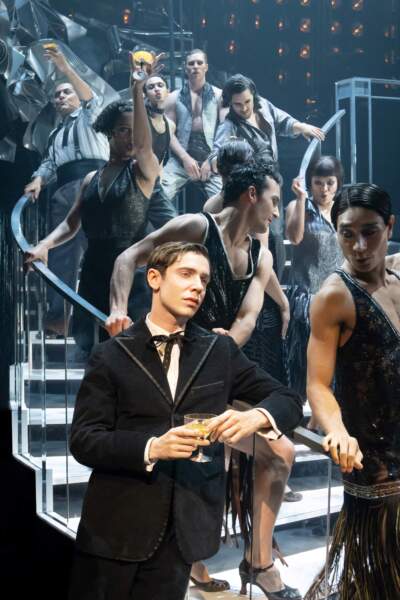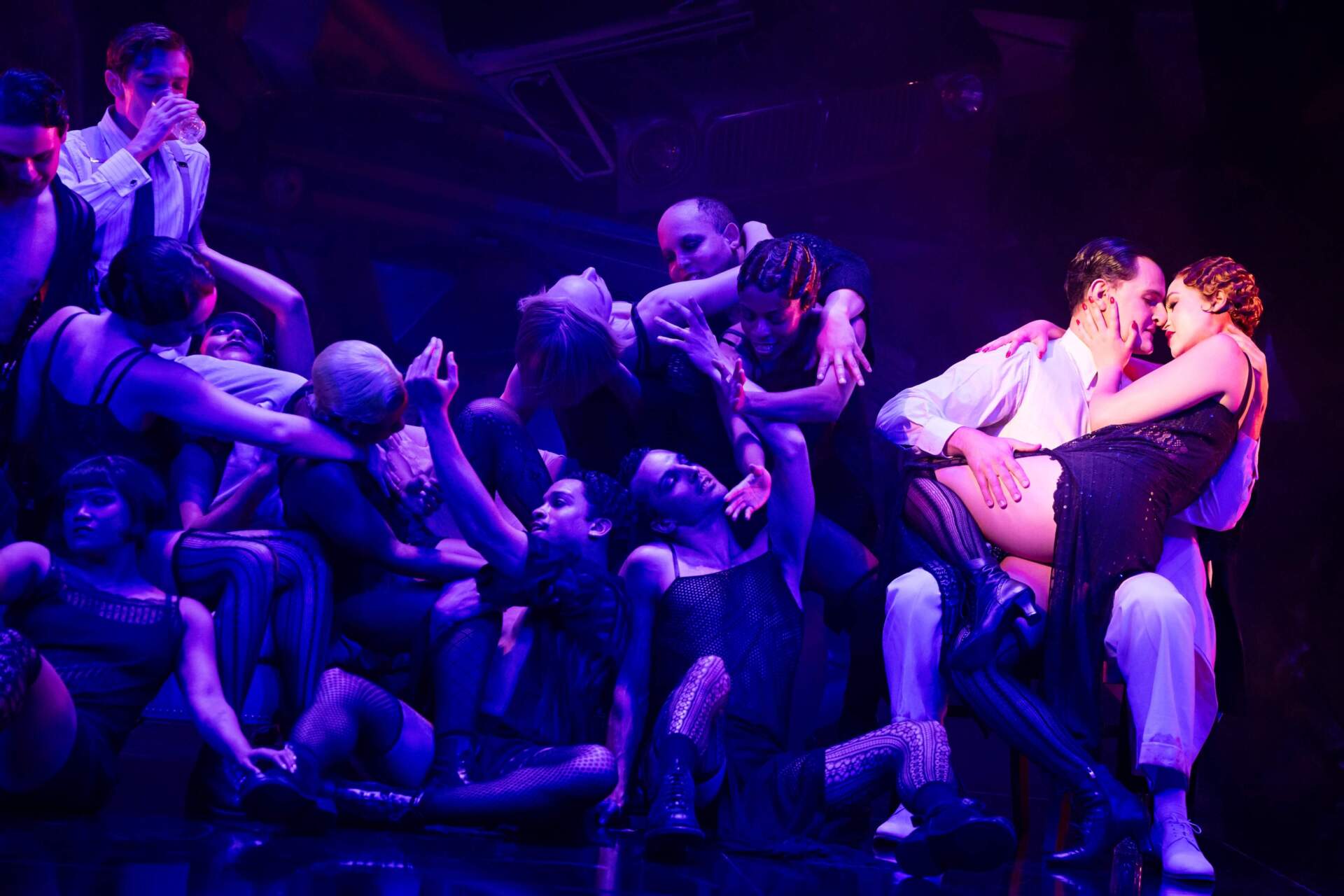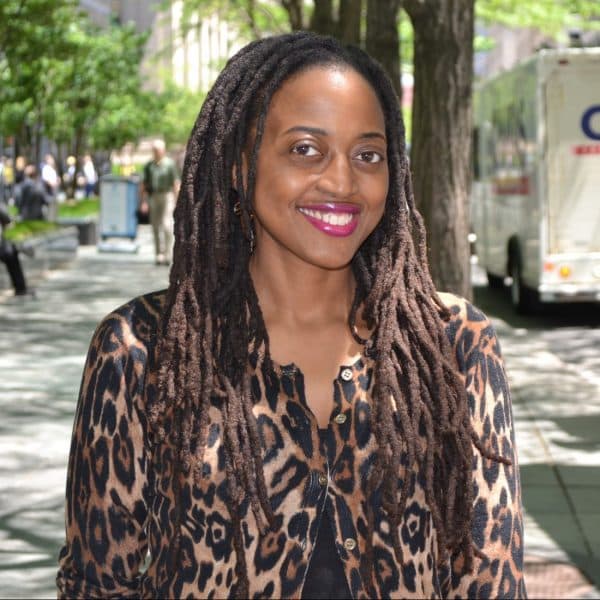Advertisement
Review
A.R.T.'s 'Gatsby' is a shimmering spectacle but lacks emotional resonance

The stage shimmered at American Repertory Theater’s stunning world premiere of the new musical “Gatsby” Wednesday night.
A mountain of crushed metal with inset lights formed stairs and platforms, and curtains of silver tinsel signaled entryways. A full band nestled within the cascading, shaped shrapnel seemed to be suspended upstage. The imaginative setting — with moveable staircases and a fabulous parlor that comes up from the stage floor — was created by scenic designer and MacArthur Fellow Mimi Lien.
From the first powerful step (choreographed by Sonya Tayeh), it was clear that the audience was in for an enchanting voyage with a remarkably talented and refreshingly diverse cast. However, it’s helpful to brush up on the storyline since the production jumps right into action at full throttle. It’s easy to become overwhelmed by the performances before truly connecting to the plot at first. The show’s director, Rachel Chavkin, who helmed the thrilling “Hadestown,” pushes the pulse of this narrative, chock full of robust numbers with music supervision by Kimberly Grigsby and music direction by Wiley DeWeese, and emotional scenes.
It’s the roaring 1920s in “Gatsby,” adapted from F. Scott Fitzgerald’s seminal novel “The Great Gatsby,” set in Long Island, New York, with a score by Florence + the Machine’s Florence Welch and Thomas Bartlett (with additional orchestrations and arrangements by Sally Herbert and Thomas Burhorn) and a book by Martyna Majok. (Majok wrote the Pulitzer Prize-winning “Cost of Living.”) During the height of COVID-19, Majok revisited Fitzgerald’s work, which is set following the end of World War I and the 1918 influenza pandemic. In the book, many were killed by the virus, she explained in an interview with TheaterMania, so she “understood the kind of feral hunger of the parties and everybody trying to pursue meaning to make up for the death and destruction they had witnessed.”

It’s been nearly 100 years since Fitzgerald’s Jazz Age tale was published. The story centers on Jay Gatsby, a millionaire with a mystique eager to reunite with Daisy Buchanan, a past lover and wealthy socialite. Gatsby desires to be a permanent fixture in her world of opulence and has done much more than he’s willing to say to climb this social ladder. But Daisy is married to the incredibly affluent, well-known Tom Buchanan, who is having an affair with Myrtle, who feels stifled by her marriage and social class. Though it might seem like a tangled love story at first, Fitzgerald tells a larger narrative about the cost of unrequited love, power and society’s all-consuming pursuit of more.
A.R.T.’s “Gatsby” is not to be confused with the other “Gatsby” musical. Kait Kerrigan’s jazz and pop-influenced “The Great Gatsby” is currently on Broadway. Fitzgerald’s work entered the public domain in 2021, which has allowed for new work to be developed without consent from the estate, including these dueling stage productions.
In the A.R.T. version, the cast and ensemble had many spectacular moments throughout the show. Ben Levi Ross aptly portrays Nick Carraway, the narrator of this classic tragedy, who befriends his mysterious neighbor, Jay Gatsby. But Solea Pfeiffer’s Myrtle, whose vocals are impossibly gorgeous, and Charlotte MacInnes Daisy were among the fiercest.
Pfeiffer, who starred in the first national tour of “Hamilton,” fully embodies the troubled Myrtle, whose kind husband Wilson (Matthew Amira) adores her. Myrtle has tasted what it’s like to be in the presence of wealth through her affair with Tom, and she is working hard to keep it that way. Her renditions of “Shakin Off the Dust” and “What of Love, What of God” with her husband are exhilarating as she sings about the confidence she’s gained through access to money and power in one number and her melancholy in the other. She and her husband lost their daughter to a sickness they couldn’t treat because they didn’t have the money for a doctor. So, their house and their marriage are things Myrtle wants nothing more to do with. She thrives at the parties Tom (Cory Jeacoma) brings her to, but her husband Wilson tells her truthfully that she can’t live at the parties. Real life, with their pain and loss, will catch up to her.
Advertisement
MacInnes as Daisy soars in “Golden Girl,” a song about being a trophy wife, and waxes nostalgic in “I’ve Changed My Mind,” which speaks to a time when she wanted to pursue her love for Gatsby instead of Tom. It’s at this moment in the musical that I could actually feel Daisy and Gatsby’s connection. “What is this Worship” sung by MacInnes and Isaac Powell as the posh Gatsby with the ensemble was also lovely and tender.
Another standout was Adam Grupper. Cast in the minor role of Wolfsheim, who helped catapult Gatsby to his nouveau-riche status, he was outstanding. Clad in a suit with human molars as cufflinks, the seasoned Broadway performer (“Into the Woods, “The Secret Garden”) sang and scatted his number “Feels Like Hell” with precisely executed skill. The choreography for this number that brought Wolfsheim and the ensemble from the stage to the stairs was top-notch.

This elite world was elevated by Sandy Powell’s costume design, from the era-appropriate fringed flapper dresses to satin pants and well-made suits; the perfectly coiffed tresses by hair and wig designer Matthew Armentrout; and superb sound and lighting design by Tony Gayle and Alan C. Edwards, respectively. A large backdrop depicted the city’s skyline and digital raindrops trickled for the musical number “It’s Pouring Down.” Later, the watchful eyes from the iconic book cover, illustrated by Spanish artist Francis Cugat, appeared looming over the stage.
The rousing numbers by choreographer Tayeh — including a memorable dance solo from ensemble member Chris Ralph — and even the more subtle movement, such as the slowed-down re-enactment of a car crash amid fog and headlights, swelled with beauty.
The tragic narrative lined with hope can make audiences cheer Gatsby’s chase of Daisy and the circles she travels in. But Daisy and Tom’s shimmering world is marked by danger, deceit and cruelty, a lesson that Gatsby realizes much too late.
“Gatsby” pulls out all the stops, packing a powerful punch when it comes to theatricality. But even though the show is a splendid spectacle to behold, when it comes to the story itself, I struggled to find the emotional resonance I was pining for.
American Repertory Theater's production of "Gatsby" runs through Aug. 3.
